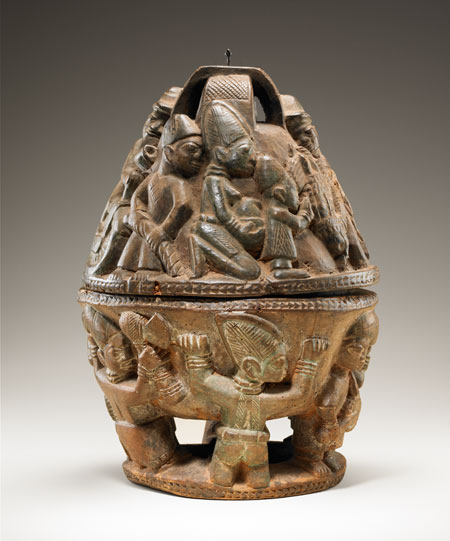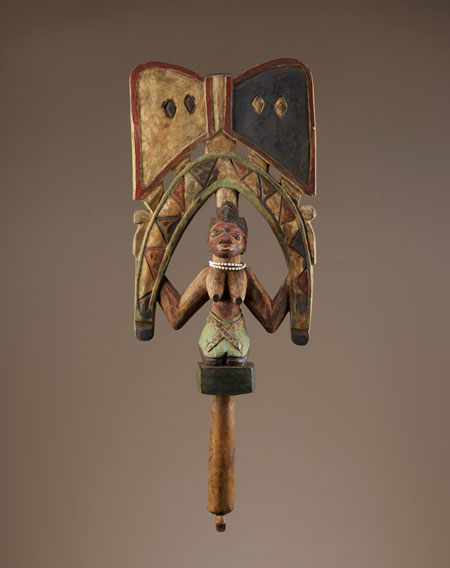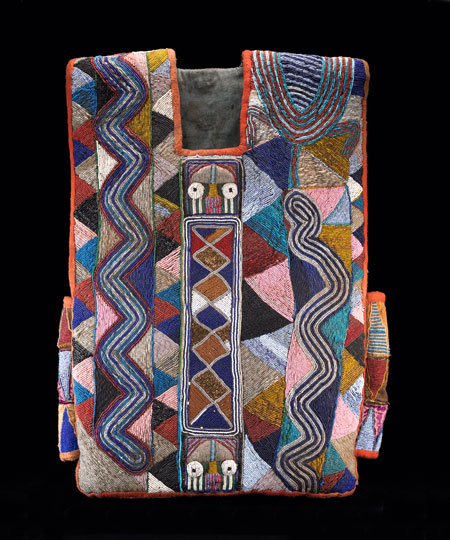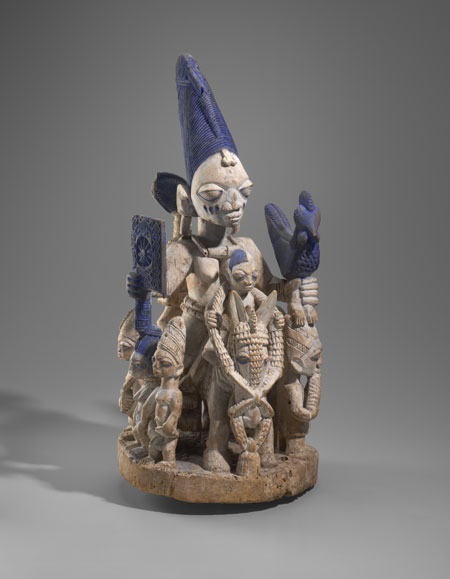Exhibit:
Introduction | Ancient sky-watchers | Celestial deities in the time of the pharaohs | Cosmic connectors | The sun at which one cannot stare | Without the moon, there would be no life | Lunar enlightenment | Cosmic models | Celestial guidance | A universe of possibilities |
Education:
Astronomy in Africa | ArtLAB+ interviews | Star sounds | Cosmos diary (blog) | African Cosmos (Twitter) | Family guide | A Galaxy of Activities | Teacher Lesson Plans
| Sons of the Moon DVDIn Yoruba traditions, the universe is seen as a lidded vessel, usually a gourd or a spherical wooden bowl.
The top half denotes the sky or heaven, which is the spirit world and the domain of the supreme creator Olódùmarè. The bottom half represents the physical world. It is the domain of the earth goddess Ilè and is inhabited by deities humans, and other creatures.
Humans reach out to the divine through rituals and offerings dedicated to lesser gods and spirits. Like the lidded bowl, the divination tray serves as a model of the Yoruba world. Its recessed center marks an intersection of heaven and earth, and its elaborately carved border filled with images refers to aspects of Yoruba history, myth, and daily life.
The top half denotes the sky or heaven, which is the spirit world and the domain of the supreme creator Olódùmarè. The bottom half represents the physical world. It is the domain of the earth goddess Ilè and is inhabited by deities humans, and other creatures.
Humans reach out to the divine through rituals and offerings dedicated to lesser gods and spirits. Like the lidded bowl, the divination tray serves as a model of the Yoruba world. Its recessed center marks an intersection of heaven and earth, and its elaborately carved border filled with images refers to aspects of Yoruba history, myth, and daily life.
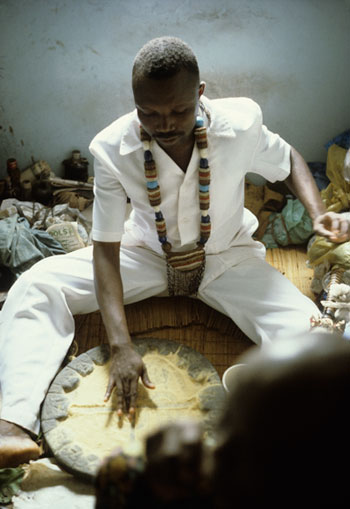
Yoruba priest Kolawole Ositola begins the rite of divination by marking a crossroads pattern in the powdered surface of the divination board. He uses an ivory tapper to invoke the presence of ancient Ifa priests.
Porogun Quarter, Ijebu-Ode, Nigeria, 1992
Photograph by John Pemberton III
Porogun Quarter, Ijebu-Ode, Nigeria, 1992
Photograph by John Pemberton III
